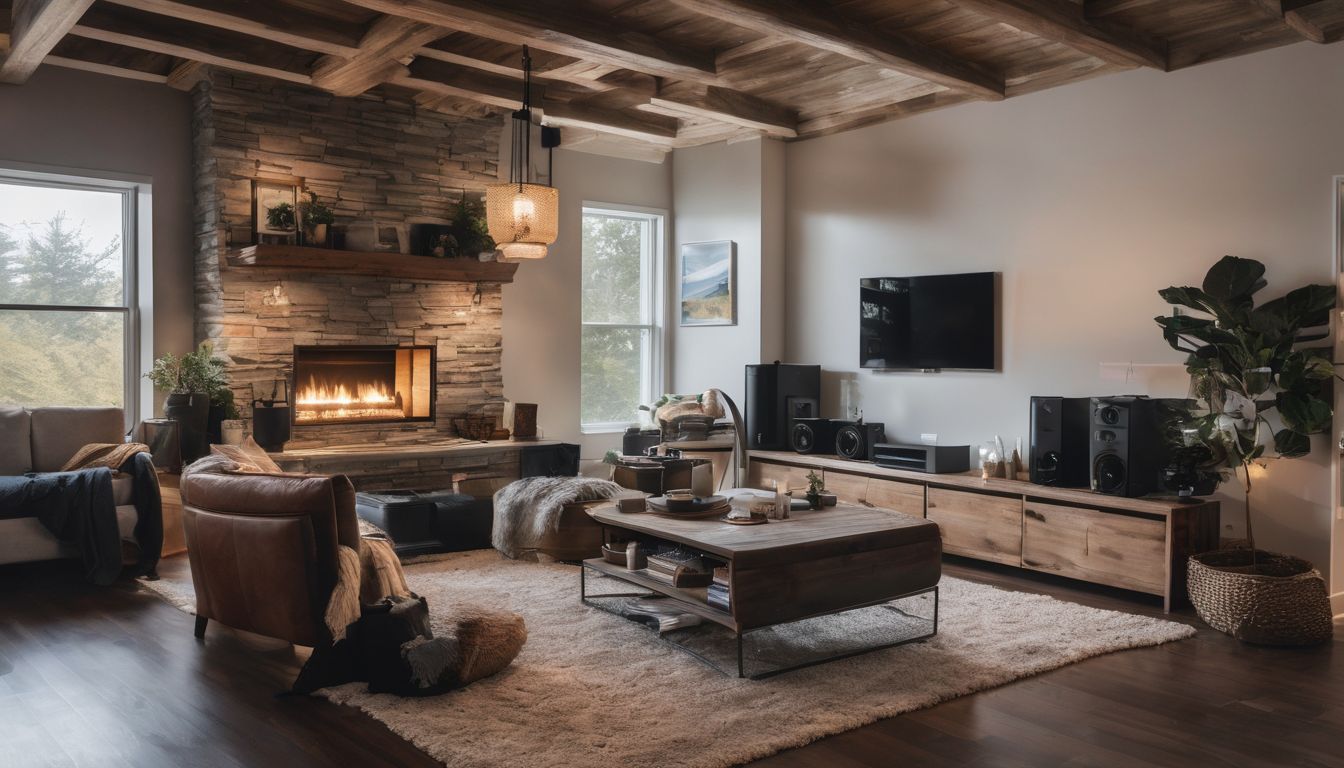Quick—what is the cost of your electricity? Don’t know? What if I were to tell you that on average, American families nearly spend as much money each year on their home’s energy bill as they do to fill their tank? And yet we know exactly what the price per gallon of gas is, while completely ignoring the thousands of dollars spent each year to power our appliances. As natural gas prices decrease, and electricity prices skyrocket with their biggest gains since the run-up prior to the oil escapades of the 1970s1, it might be time to take a look at ways to reduce your reliance on expensive electricity!
BENEFITS OF SOLAR PANELS FOR YOUR HOME: Today, innovations in both technology and financing are making it increasingly easy for you to install solar panels on your home. Essentially, as long as you have a sunny roof, and live in a state that believes in solar politically, you can install solar today. Not only can you reduce your utility bills, but solar also has some great co-benefits:
- Good for the environment: Solar doesn’t require you to burn the dead fossils, such as coal, that release dangerous chemicals into our air in order to produce the same electrons you need to power your life. For example, the burning of coal releases mercury into the atmosphere. For example, the burning of coal to power an incandescent lightbulb releases 10 times the amount of coal into our air as is contained in a compact fluorescent lightbulb.2
- Good for the economy: Over the past 10 years, employment in the solar industry has increased exponentially.3 In addition, utilizing an essentially unlimited resource (sunlight) to generate electricity means no unforeseen increases in cost.
- Good for public health: Coal mining is not only an incredibly dangerous occupation, but burning coal and other fossil fuels is incredibly toxic to our public health.4 Solar doesn’t require the direct combustion of fuels to make energy, which will help to keep our air clean. However, it is worth noting that there is still much left to be desired in terms of the manufacturing and recycling process involved in the solar panel industry.
Cost: High, but financing options greatly reduce upfront cost to low or none.
Time and effort: Moderate
Although you won’t have to install the system yourself, you probably do have to consider this a significant house renovation. This type of project requires a bit of collaboration with your contractor as well as a good amount of research into solar companies and local policies.
Where it all begins—Silicon
There is tremendous range in the quality and types of solar panels on the market today. Even the most common photovoltaic (PV) panels are varied enough to leave you scratching your head. So what gives?
Let’s start with the material that makes this possible—silicon. Silicon is the second most abundant element in our Earth’s crust (after oxygen). Yet silicon is most commonly found as silica, unusable for solar panels, but makes for great sand castles. The silicon must be extracted, which is commonly done by heating the silica to 1700 degrees Fahrenheit.
Pure silicon5
The cooling rate determines the fate of silicon and solar production, as the slower it is cooled, the larger the single crystals can become. Once extracted and refined, the silicon can then serve as the semiconductor for the solar panels, capturing electrons from the sun in order to convert to direct current (DC) electricity. Because home appliances run on alternating current (AC), this electricity must be inverted through an “Inverter” prior to entering the house.
Monocrystalline solar cells are formed from a single silicon crystal slowly cooled into a larger cell. Without multiple crystals to interrupt the flow of electrons, single crystal cells are the most efficient. This efficiency comes at a cost, the slow cooling is difficult and expensive, making monocrystalline panels more expensive than their polycrystalline counterparts.6 Polycrystalline solar cells are produced from a piece of silicon with many crystals, leaving it with an imperfect surface from the multiple silicon crystals. Because of this, it is less efficient than the monocrystalline panels, but less expensive as well.
There are other types of solar panels out there, such as concentrated solar or thin film, but in terms of installing panels on your home, you will want to stick with PV panels for now. They are the most straightforward and most battle tested of the bunch.
Is your home fit for solar?
1. Sun
Contrary to popular belief, it isn’t so much where you are in the country, but rather where you are in the neighborhood. It is far more important to have a south or west facing roof free of any shading from other buildings or trees than to be located in Los Angeles. Any good solar installer will provide you with a free or low-cost assessment of your house for solar prior to giving you a quote.
2. Roof
Solar generally doesn’t work on clay tile or slate roofs. Other than that, just about any roof should be able to support solar panels. Installation is easiest on reasonably graded, composite shingled roofs. Generally, you will need about 100 square feet for every kW of solar you install. Additionally, your roof will need to have structural integrity—you don’t want your $20,000 investment to come crashing down onto your TV! As a tip, if you have an old roof that you plan on replacing at some point, consider getting your roof redone when you install solar because you won’t want to redo your roof in five years with all the panels on top.
3. Politics
Does your state have a feed-in tariff policy or rebates available for solar? Feed-in tariff policies allow you to sell your extra energy back to the grid, allowing you to use the grid as your battery. Without this policy, it will not be cost-effective to install solar for your home.
Sizing your system
A few notes on sizing your solar system. It is important to remember solar installers are in the business of selling solar panels, not in reducing your costs. The cheapest energy source is the negawatt, or in other words, energy saved. If you have a second fridge in the garage that used to be grandma’s, chances are it would take an entire solar panel to power that single fridge, let alone begin to power your house. The first step towards solar is energy efficiency, and it begins by switching out your lights and eliminating old and outdated appliances. By spending $1000 buckaroos on a new, smaller fridge, you can save your self $5000 in unneeded solar panels.
Installing solar panels is a lot like stringing your Christmas tree with lights. Remember those old lights that would all go out because of a renegade burnt out bulb? Well, solar panels operate in the same way. Traditionally, solar panels are installed in a series, commonly referred to as a string. The inverter to convert the DC current to AC current is sized according to the panel strings. Thus, if one panel goes bad or is shaded too much, then the string can’t produce enough electricity to make the inverter work, and the whole string goes down. What does this mean for you? Well, for one, make sure to check potential shading at all times of the day and year. Second, you might be interested to learn about micro-inverters. Micro-inverters operate the same way as a regular inverter, but are placed at each panel, meaning that if one panel goes down, then it is the only one affected.
Perhaps most exciting about micro-inverters is the flexibility they provide in scaling up your system. If you only have enough money to install a couple of panels, but know that you want to add more later, you will want to use micro-inverters. Because the inverter is sized to the panel strings, you can’t simply add another panel to the string—you have to add another string of the same kW.
Finally, rebates play a key role in sizing your system. Many times, rebates are only provided for 80% of your house’s peak kW. This is supposed to be designed to protect customers from solar installers overdesigning a system, but it also serves to ensure the large public utilities won’t be going anywhere anytime soon. Check with your local installers and city government to find out more.
Connecting to the Energy Grid
There are three options in terms of connecting your panels to the grid:
1. Grid-tied
Connecting your panels to the grid is the most economically feasible option, and in states with feed-in tariff policies this process allows you to sell your surplus electricity to the grid. However, this also means that if the grid goes down (power outage or blackout) your system goes down as well. This is to ensure the safety of your home. Because solar power produces DC current, it would feed directly into your home as DC current, greatly increasing the risk of shock.
2. Off the grid, battery style
This is for all you self-sufficient folk. While it is considerably more expensive and far less efficient to store surplus power in a generator or battery, it does buffer your from the grid’s power outages.
3. Hybrid
In this system, a simple switch flips your system’s energy between the grid and the battery backup, allowing you the flexibility to store your surplus in the grid, but also switching to a battery backup when the grid goes down. Obviously, this is the most expensive option.
Shop Around before Making your Solar Decision
Go local: Local companies have a much better idea of local weather conditions, local government subsidies, and are able to find the right kind of panel for your area. In addition, they’ll probably know the rules and regulations that govern solar panel installations in your area.
Ask questions: Although certain companies can give you a cheaper price than others, you want to make sure that they are comparable in all aspects.
- How much experience do they have?
- What certification or training programs do they have?
- What do they know about zoning and electrical requirements in your area?
- What do they know about local and national solar incentives?
- Can they give you a list of references?
- What services are included after installation?
- How much does the warranty cover?
- Who is responsible for the system—especially if someone goes out of business?
- Are they a member of a solar energy association?
- What payment options do they offer?
- Do their packages include all factors—grid connection, permits, warranty, taxes, electrical inspection?
- Will they get your permit, and does the package include permitting costs?
Financing
So you have found the right types of panels, and know the appropriate size. How the heck are you supposed to pay for all of this? Well, lucky for you, many investors and companies are waking up to the opportunities for investing in solar. This guide is already too long, so I will spare you the details, but options range from leasing to third party financing (loans) to self-financing (maximum personal investment), to potential PACE programs. There are many opportunities to get solar at a low or no up front cost. The real question then becomes, how much of the investment income are you willing to sacrifice for somebody to take the “risk”?




